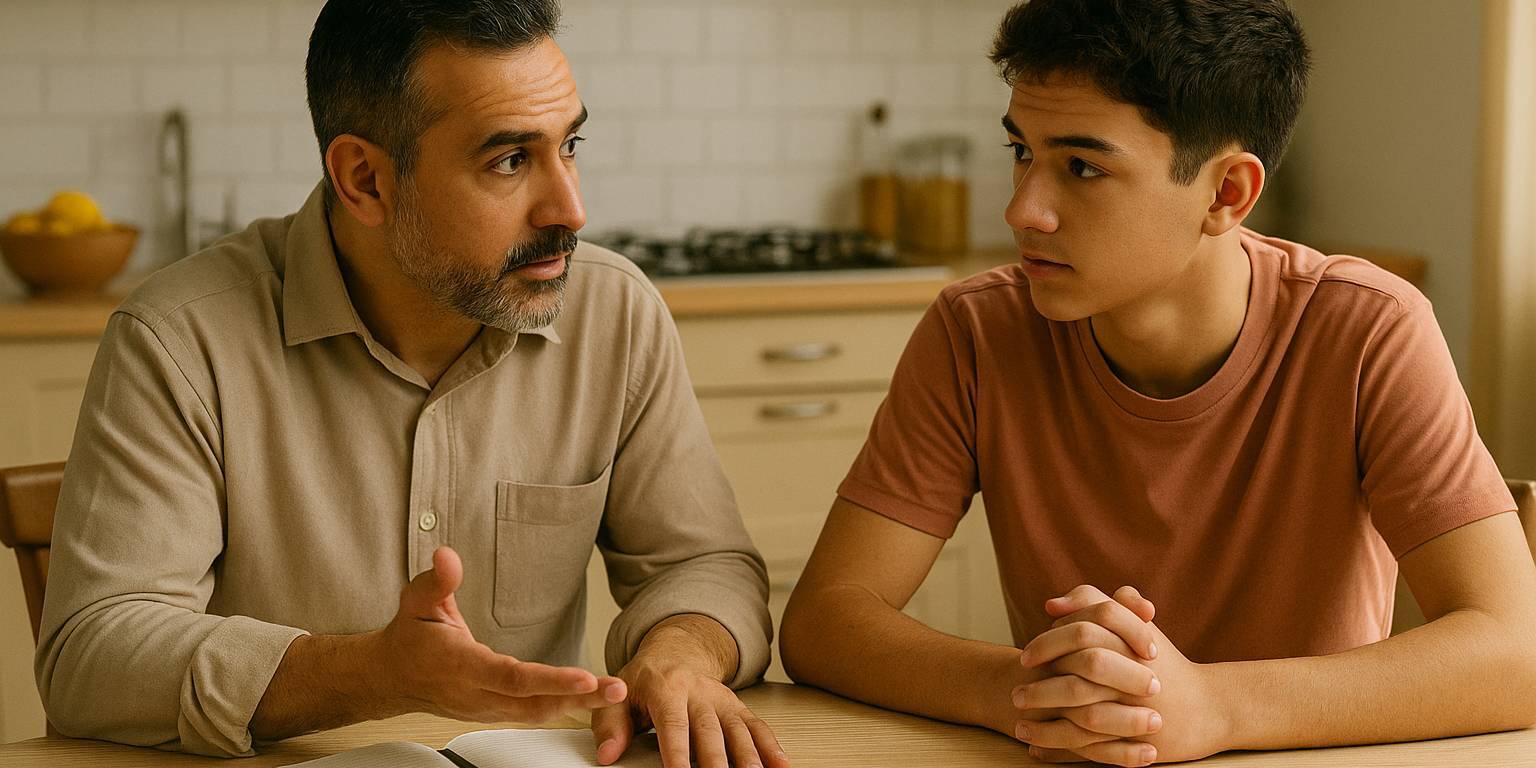Just when you think you’ve nailed the “money talk” with your teen—you’ve shown them how to budget, you’ve explained interest rates and you’ve sighed loudly while paying for a third pair of headphones—along comes a new survey to remind us that the conversation isn’t enough. The SheKnows Teen Council’s Financial Literacy survey finds that 88 percent of teenagers actually talk to their parents about saving, investing, budgeting and spending, yet their confidence in handling money is a middling 3 out of 5. How is it that our kids are chatting away about cash while feeling completely unprepared?
Part of the problem: they’re not actually doing much with their cash. Only 60 percent of teens have a savings account despite 84 percent owning a debit card. Nearly 20 percent have their own credit card, 40 percent are hooked to a parent’s card and 68 percent work for their spending money. In other words, they have access to plastic but little practice in delayed gratification. Many treat Mum and Dad like human ATMs: they use their own cash for incense or vinyl records and save your money for takeout. When the bank balance hits zero, they shrug and wait for the next deposit. Tracking their spending? That’s apparently optional, with some scribbling expenses in the Notes app and others simply saying “I don’t. Whoops”.
If this sounds familiar, don’t panic. It turns out even well-educated teens know the theory: 96 percent understand saving and 88 percent understand budgeting. They’ve got inflation down pat (80 percent), but investing and credit scores still confuse a good chunk of them. And 92 percent of teens say they want schools to teach them real-world money skills. The gap isn’t knowledge; it’s practice and confidence.
So what can we do? Start by letting them make decisions with real money. Give your teen a small grocery budget for the week and let them plan the meals. Hand them cash at the mall and walk away. If they blow EGP 500 on bubble tea and accessories, resist the urge to bail them out. Encourage them to open their own savings account and match whatever they deposit. Use chores as teaching moments: “You earn EGP 10 for washing the car; where will it go—the new sneakers fund or your savings?” And yes, talk about your own mistakes too.
In Egypt and across the Middle East, parents often hide money talk behind whispers and sighs. Let’s change that. Your teen doesn’t need another lecture; they need a chance to experience scarcity, plan ahead and feel the thrill of watching their savings grow. Because the ultimate goal isn’t simply to understand money—it’s to feel confident enough to handle it when you’re not there.
۪ بالعربي:
لما تيجي تكلم ابنك عن الفلوس، بتحس إنك بتعيد وتزيد؟ اكتشف إن 88 ٪ من المراهقين فعلاً بيتكلموا مع أهاليهم عن الادخار، والاستثمار، والميزانية، لكن تقييمهم لقدرتهم على إدارة الفلوس هو 3 من 5. المشكلة إن الكلام لوحده مش كفاية؛ 60 ٪ بس عندهم حساب توفير رغم إن 84 ٪ معاهم بطاقة خصم، و20 ٪ معاهم بطاقة ائتمان خاصة بيهم.
ولإن الفلوس سهلة الوصول، كتير منهم مبيتعلمش الصبر. بيلجأوا لفلوس ماما وبابا للحاجات الأساسية ويصرفوا فلوسهم على الكماليات. ولما الفلوس بتخلص، بيستنوا المصروف الجاي. الحل؟ إديله مصروف حقيقي وخليه يخطط بيه. خليه يشتري طلبات البيت، أو يدير ميزانية الخروجة. لو صرف كل الفلوس على “بابلي تي” ومكياج، ماتنقذهش. افتح حساب توفير باسمه وشجعه يحط جزءاً من أي فلوس تجيله. واستغل الأعمال المنزلية كدرس: “هتكسب 30 جنيه على غسيل العربية؛ هتحطهم في جزمة جديدة ولا في حساب التوفير?” شجع أولادك على ارتكاب الأخطاء وتعلم منها. عايزينهم يحسوا إنهم قادرين يديروا فلوسهم بدون ما إحنا نكون موجودين.
Sources:
– SheKnows Teen Council Financial Literacy survey results (August 15 2025)
– Article on teen spending habits and parental involvement







Leave a Reply
You must be logged in to post a comment.